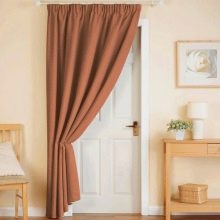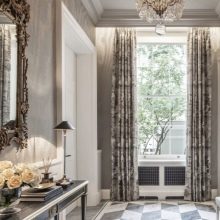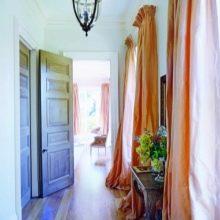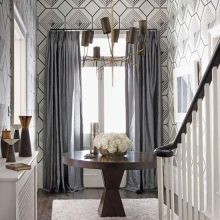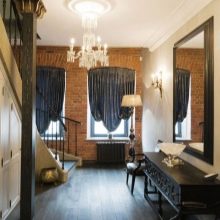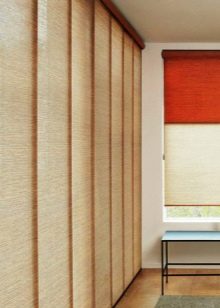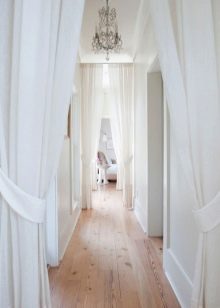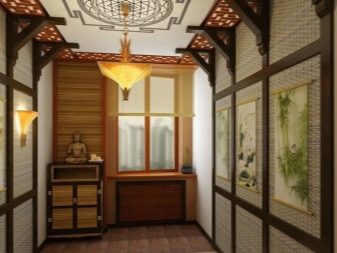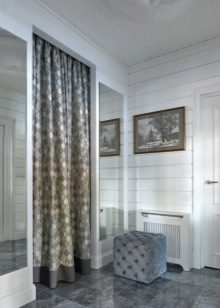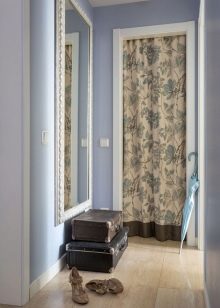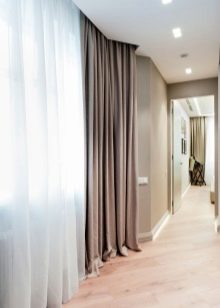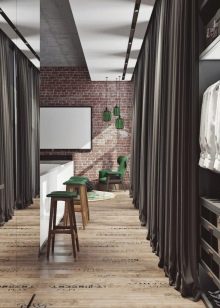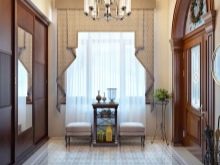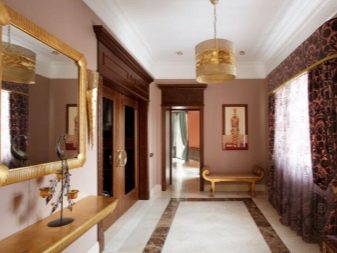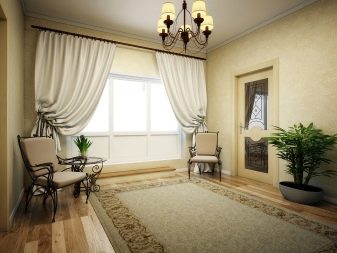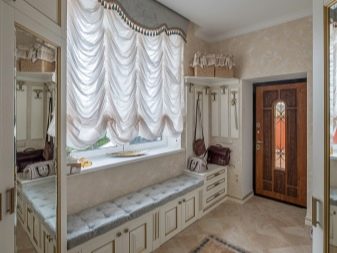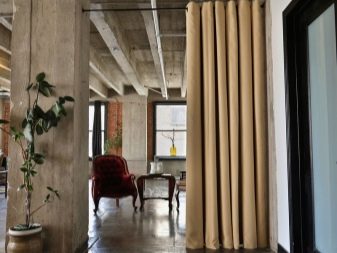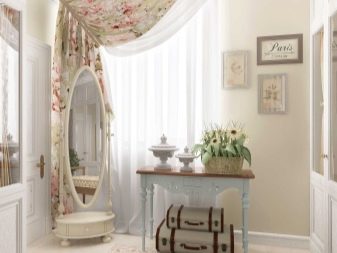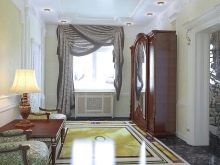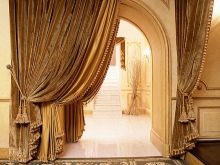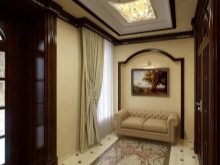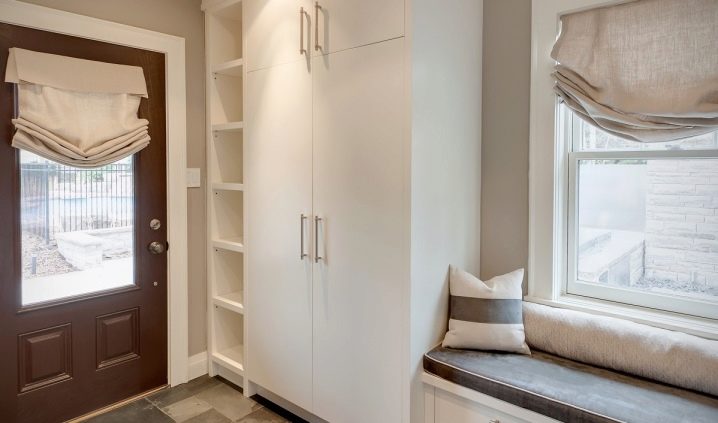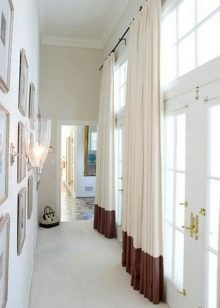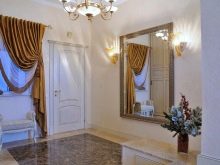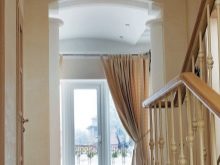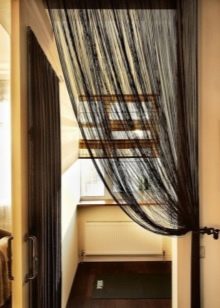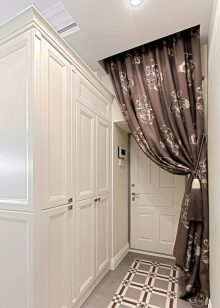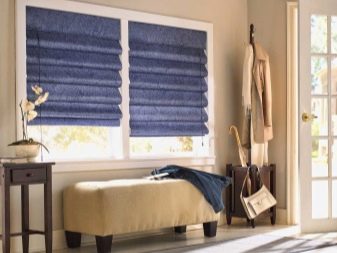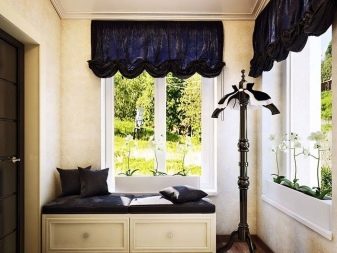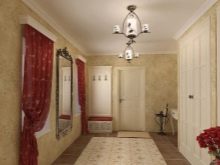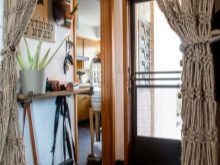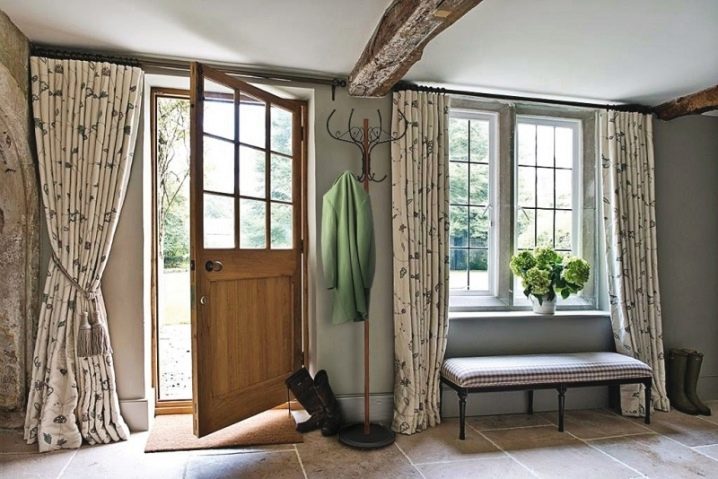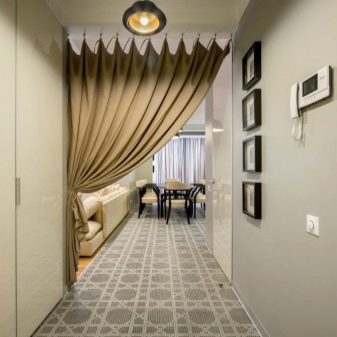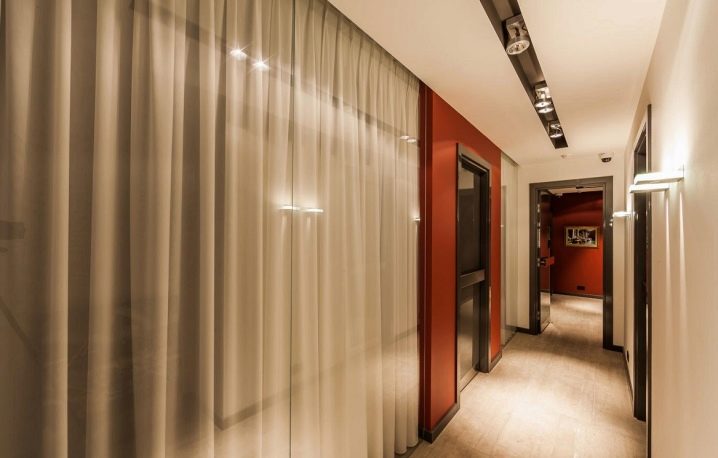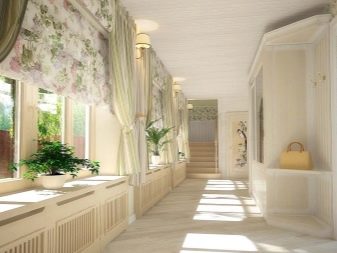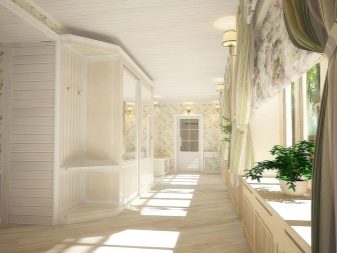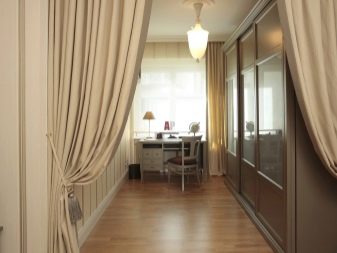Choosing curtains in the corridor
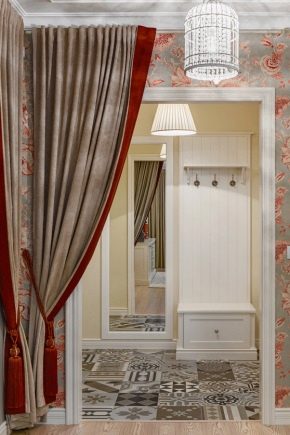
An atmosphere of harmony is appreciated in modern interior design. This applies not only to living rooms, but also to the corridor. In the article we will tell you how you can decorate it with curtains, making the atmosphere as comfortable and inviting as possible.
Overview of suitable models
The type and style of curtains for the decoration of the corridor varies. It may depend on the style of the interior, as well as on the features of the layout. These two factors determine the cut, the material of the curtains.
Curtains are used to decorate windows, they are used to zone the space, separating functional zones of different purpose. Products can be classic, floor-length, short, with a traditional, sliding, roll-up principle of opening. Control can be manual or remote.
Depending on the style, it can be classic, Japanese, Austrian, French, Roman curtains, cafe options, pleated blinds, roller blinds. The type of attachment can be different. Based on the design features, you can decorate the corridor with curtains on ties, hinges, drawstrings, eyelets.
For the design of the corridor, you can choose simple or multi-layer options. Products can have a simple or complex texture, be single or double, transparent or dense, monochromatic or patterned.
A lot depends on the type of windows. For example, for arched, round, triangular windows, you should choose French or Austrian curtains. Models with draperies and scallops adorn the pompous interior styles.
Other curtains cannot be opened. They are used as decoration for the upper part of window openings. Often complemented by a transparent veil. Curtains can have bows, rosettes, embroidery, inlay.
Small windows need small curtains. These can be laconic straight curtains on rings or blinds. The purchase of heavy curtains in this case is inappropriate, as is the presence of complex decor (lambrequins, puffs, complex draperies).
Which material should you choose?
Curtain textiles can be natural, artificial, combined. Choosing the right option depends on the resources of the particular design. For example, country and Provence styles need natural materials. Cotton, satin, linen will do.
Japanese curtains are made of silk, cotton, bamboo, rice paper. They are appropriate for decorating spacious and small rooms. The material is excellent at absorbing sunlight. Most often it has a simple print.
Classic straight curtains are sewn from traditional or textured linen, jacquard, silk, glossy viscose, microfiber, tapestry, chiffon, crepe. In addition, satin, plush, brocade and velvet are used in production.
For modern design trends, curtains made of combined or synthetic materials are needed. Natural textiles are short-lived. It quickly loses its attractiveness in appearance, deforms and fade.
For example, the best solution for the Art Nouveau style would be curtains made of a material with a metal surface texture. Glossy textiles without a pattern look impressive and high-status in the interior of the corridor.
Demonstration of luxury is important for the classic, English style. Such curtains are sewn from tapestry, jacquard, velvet. Their logical conclusion is the thinnest veil without a pattern.
Design options
Traditional curtains in the corridor are sliding panels that are attached to the cornice. They have folds, often fixed on the sides with tapes or clips. Depending on the design, they can be supplemented with a veil, fringe, tassels, lambrequin.
Modern curtains are often laconic. Their decor can be material texture or metal eyelets. Textiles with an unusual shimmer of color, a nodular texture, obtained by weaving threads of different thicknesses, are in fashion.
Models for tall windows can be traditional or long to the floor. Depending on the design, they can have a rigid lambrequin with a curly edge. Lambrequin can be perforated.
The design of the curtains emphasizes the style of the entire home. For example, loft-style curtains are straight, rather thick and heavy. They have no prints or decorative elements.
Country and Provencal style models are often decorated with a light floral print. They can be ordinary or cascading, decorated with puffs, grabs, ruffles, hemstitching.
Products for the arrangement of corridor windows in the Empire or Baroque styles are usually voluminous. They can be supplemented with muslin, symmetrical or asymmetrical scallops. On a cut can be panels, collected in festoons.
Selection Tips
The walk-through area should harmoniously fit into the interior of the home.
It is important that it forms a single whole with the textile decoration of other rooms. This is most often achieved by purchasing curtains from the same fabric. However, the design of the curtains may vary.
When choosing textiles, the possibilities of visually changing the space are taken into account. So, light curtains erase the rigid boundaries of the room, make it more spacious and brighter. They distract the eye from imperfections in the walls.
It is important to consider the practicality of the products. It is more advisable to choose curtains from a material that repels dust and foreign odors. It is advisable to buy products from a material that is resistant to creasing and frequent washing.
The color of the curtains is selected taking into account the color scheme of the interior. Curtains should complement the colors used in the design. The priority is light shades. They tune in a positive mood and ennoble the space.
The type of curtains is individual. For example, a light tulle of a light shade can be hung on a small window. It will give the room the illusion of warmth.
Models in a small hallway should be laconic. You should not buy curtains with a print in a cramped space. From this, the corridor will seem visually congested and uncomfortable.
Ornamental options are good where you can't do without a pattern. For example, this is a country-style design, in the Greek, Provencal direction. Models with monograms will decorate the classic style. Products with tropical ornaments - African interior.
Models for zoning a corridor and an adjacent room should be monochromatic. Door options should be practical.
Do not take curtains with complex draperies. They will interfere with the operation.
You can buy curtains for glass doors by decorating them in the shape of an hourglass in the middle of the panel. Such products will look harmonious in a narrow corridor with small windows.
Options for narrow windows can be rolled, folded, covering only glass sashes. You can visually change the look of long windows using volumetric curtains of a stationary type. Austrian or French models will do.
The curtains that are planned to be hung near the door should be as practical as possible. This is a textile with a dense weave of threads, resistant to frequent washing and fading.
If there is little light in the corridor, it is preferable to take models from translucent matter. When the window faces the sunny side, the curtains are matched with lining. This will prevent them from fading in the sun.
If the walls are not high, it is better to buy short curtains. In this case, floor models will visually reduce the height of the ceilings even more.
The temperature of the shade of the textiles is selected taking into account the location of the windows. If they face the north side, you need to buy curtains in warm colors. A room with windows facing south should be balanced with cool shades of curtains.
Beautiful examples in the interior
We offer several examples of a successful choice of curtains for the interior of the corridor of an apartment or a private house:
-
hallway decoration with straight cut curtains in a single color scheme;
-
curtains in the interior of a private house as an element of aesthetic space zoning;
-
option for finishing a large window in the hallway with a staircase;
-
an example of the design of curtains in the corridor of a modern city apartment;
-
the idea of finishing windows in a spacious mansion - the choice of a multi-layer composition for all windows;
-
a practical and aesthetic version of curtains for dividing the space.
